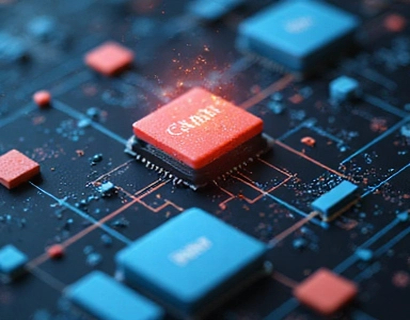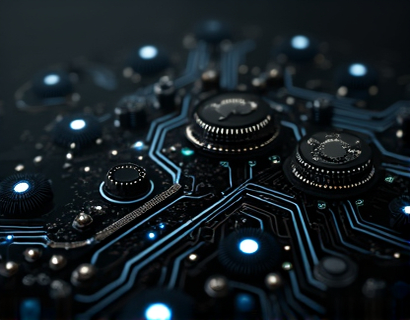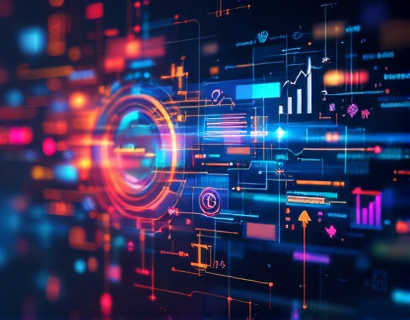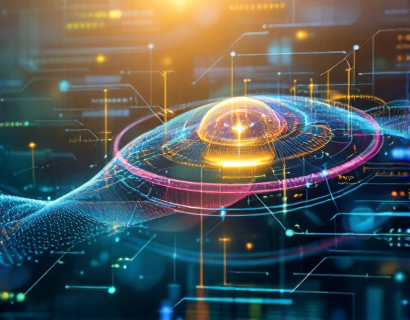Crypto and AI: Pioneering Next-Gen Digital Transformation for Enhanced User Experiences
The intersection of cryptocurrency and artificial intelligence (AI) is giving birth to a new era of digital transformation, one that promises to redefine how we interact with technology and each other. This fusion of blockchain technology and advanced algorithms is not just a technological curiosity but a powerful force driving innovation across various sectors. For tech enthusiasts and early adopters, understanding this synergy is crucial as it holds the key to unlocking enhanced user experiences and more secure, efficient digital solutions.
The integration of AI into the crypto space is revolutionizing traditional financial systems by introducing smarter, more adaptive, and secure methods of transaction processing, security, and user interaction. AI algorithms can analyze vast amounts of data to predict market trends, optimize trading strategies, and enhance the overall user experience on blockchain platforms. This article delves into the transformative impact of this merger, exploring how it is shaping the future of digital innovation.
Enhanced Security Through AI and Crypto
One of the most significant benefits of combining AI with cryptocurrency is the enhancement of security measures. Traditional financial systems are often vulnerable to fraud and cyber-attacks, but blockchain's inherent security, coupled with AI's predictive capabilities, creates a nearly impenetrable defense mechanism. AI can detect anomalies in transaction patterns in real-time, identifying potential threats before they materialize. This proactive approach to security ensures that user data and assets remain protected, fostering greater trust in crypto platforms.
Moreover, AI-driven smart contracts can automate and enforce contractual obligations with precision, reducing the risk of human error and fraud. These self-executing contracts with the terms directly written into code eliminate the need for intermediaries, making transactions faster and more secure. The combination of blockchain's transparency and AI's intelligence creates a robust framework for secure and reliable digital interactions.
Personalized User Experiences
The synergy between AI and crypto is not limited to security; it also revolutionizes how users interact with digital platforms. AI algorithms can analyze user behavior and preferences to deliver personalized experiences, tailoring content and services to individual needs. In the context of cryptocurrency, this means that users can enjoy a more intuitive and user-friendly interface, with features and tools that adapt to their specific requirements.
For instance, AI can optimize wallet interfaces, suggesting the best times to buy or sell based on market analysis, or providing real-time notifications about significant price movements. This level of personalization enhances user engagement and satisfaction, making crypto more accessible and user-friendly for a broader audience. As AI continues to evolve, the potential for even more sophisticated and personalized user experiences in the crypto space is immense.
Efficient Market Operations
The integration of AI in cryptocurrency markets is also transforming how these markets operate. AI can process and analyze vast amounts of data from various sources, providing insights that were previously unattainable. This data-driven approach enables more accurate market predictions, helping traders make informed decisions and reducing the impact of speculative trading.
Additionally, AI can optimize trading algorithms, adjusting strategies in real-time based on market conditions. This adaptability leads to more efficient market operations, reducing volatility and improving liquidity. For users, this means better trading opportunities and a more stable environment in which to invest and grow their assets. The combination of AI's analytical power and blockchain's transparency creates a more transparent and efficient market ecosystem.
Innovative Financial Products and Services
The fusion of AI and crypto is giving rise to innovative financial products and services that were unimaginable just a few years ago. Decentralized finance (DeFi) platforms, for example, leverage AI to offer a wide range of financial services, from lending and borrowing to yield farming and insurance. These platforms use AI to assess risk, set interest rates, and manage portfolios, all while maintaining the decentralized and transparent nature of blockchain technology.
Another exciting development is the creation of AI-powered crypto assets, such as NFTs (Non-Fungible Tokens) that incorporate smart contract functionality. These assets can represent unique digital items, art, or even real-world objects, with AI enhancing their value and utility through interactive and dynamic features. The potential for new financial instruments and investment opportunities is vast, driving innovation and growth in the crypto ecosystem.
User-Centric Design and Accessibility
The focus on user experience is a critical aspect of the crypto and AI convergence. As the technology becomes more complex, ensuring that platforms are user-friendly and accessible to a wider audience is essential. AI-driven design tools can analyze user feedback and behavior to optimize interfaces, making them more intuitive and easy to navigate. This user-centric approach not only enhances the user experience but also lowers the barrier to entry for new users, democratizing access to crypto technologies.
Moreover, AI can facilitate the development of multilingual and culturally sensitive interfaces, breaking down language and cultural barriers. This inclusivity is vital for the global adoption of crypto and AI solutions, ensuring that the benefits of these technologies are accessible to people from diverse backgrounds.
Challenges and Considerations
While the potential of combining AI and crypto is immense, there are challenges and considerations that must be addressed. One of the primary concerns is the regulatory landscape. As crypto and AI technologies evolve, regulators are grappling with how to oversee these innovations without stifling growth. Striking the right balance between innovation and regulation is crucial to ensure that the benefits of these technologies can be realized while minimizing risks.
Another challenge is the technical complexity involved in integrating AI with blockchain systems. Developing robust and scalable solutions requires expertise in both domains, and the lack of standardized frameworks can hinder progress. Collaboration between developers, researchers, and industry stakeholders is essential to overcome these technical hurdles and create seamless, efficient systems.
Future Prospects
Looking ahead, the future of crypto and AI is bright, with numerous possibilities on the horizon. As AI continues to advance, we can expect even more sophisticated applications in the crypto space, from enhanced privacy solutions to more advanced predictive analytics. The integration of machine learning and quantum computing could further revolutionize how data is processed and secured on blockchain networks, opening up new frontiers in digital innovation.
Moreover, the growing adoption of 5G and IoT technologies will create a more interconnected world, where crypto and AI can play a pivotal role in managing and securing the vast amounts of data generated by these technologies. The potential for smart cities, autonomous systems, and decentralized networks is vast, with crypto and AI at the forefront of this transformation.
In conclusion, the merging of cryptocurrency and artificial intelligence is not just a technological trend but a fundamental shift in how we approach digital innovation. By enhancing security, personalizing user experiences, optimizing market operations, and creating innovative financial products, this synergy is paving the way for a more secure, efficient, and user-friendly digital future. For those interested in the next generation of tech solutions, understanding and embracing this convergence is essential to stay ahead in the rapidly evolving landscape of digital transformation.











































